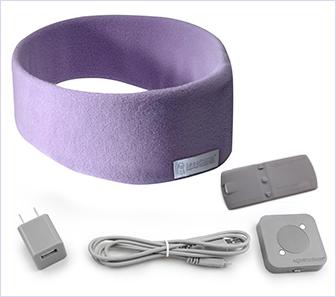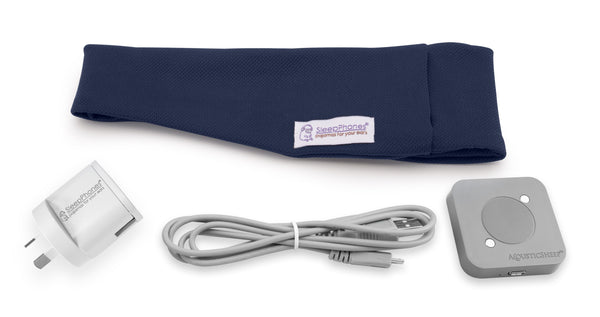

That didn’t concern me, as my planned use was only podcasts and videos. This is a convenience product primarily designed for sleep sounds, so I didn’t think much work would have been put into the audio quality. I wasn’t expecting much in terms of sound quality. My plan is to carefully sew a couple of short seams on each side of the speakers to stop them moving. In theory, you only have to do this once, but they can move if you aren’t careful about how you put the SleepPhones down after use. The other thing that is fiddly is adjusting the position of the speakers inside the headband, as you have to kind of work them into position through the fabric, test, then repeat. I didn’t use the two volume buttons, finding it easier to adjust the volume on my iPhone or iPad. I have to say, this is quite awkward, so I only used the larger center button to switch them on and off (in each case, hold down and wait for the confirmation tone).
SLEEPPHONES EFFORTLESS BLUETOOTH
There are three buttons on the rear Bluetooth module, and as they are inside the band, you have to use them by feel.

I’m hat size 57 and found the medium a good fit. Too tight, and it will be uncomfortable too loose, and it will slip down, or the speakers will wander within the band. You do need to get the right size headband. I was conscious of a slight feeling of tightness across my forehead when I first put them on, then quickly got used to them and was scarcely aware they were there. SleepPhones are very comfortable to wear. It’s the elastic of the band against your ears that holds them in place. That is, they have a wired connection to the Bluetooth module, but the speakers themselves don’t have a fixed position within the band. The speakers are free-floating inside the sides of the headband. This is slim enough and has a soft enough casing that you really don’t feel it when your head is on a pillow. You wear the front of it around your forehead, or across your eyes, with the slim Bluetooth module in the rear. All the electronics sit inside this double-layered band. Available in a choice of colors, the headband is a stretchy fabric made from a mix of polyester and spandex. SleepPhones look exactly like a sweatband, which is pretty much exactly what the outer form is. I tested the badly-named Effortless model – but more on that below. Both are Bluetooth headphones, the difference between them being that Wireless are charged with a cable while Effortless offer wireless charging via something which looks like a clunkier version of the Apple Watch puck. The two main models for iPhone owners are Wireless and Effortless. The original (Classic) model is equally useless to iPhone owners, as it has a cable with a 3.5mm jack. There’s a somewhat confusing array of different models, some of which are only suitable for getting to sleep, as they have built-in sounds and cannot connect to your iPhone or iPad. SleepPhones, in contrast, are designed to be comfortable with your head on a pillow, no matter which way you turn.

On-ear or over-ear headphones don’t let you turn onto your side, and in-ear ones tend to be uncomfortable when you do, digging into your ear. I tend to go to sleep later than my girlfriend, and while I mostly read before sleep, I sometimes like to listen to podcasts or watch videos … They were originally created for use by those who have difficulty falling asleep, so they can listen to white noise, rain sounds, or similar.īut my interest was rather different.

SleepPhones are headphones specifically designed to be worn in bed.


 0 kommentar(er)
0 kommentar(er)
